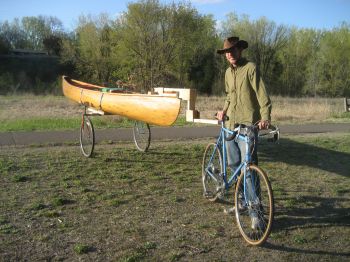Out and around in Delhi
June 15th, 2008Delighted to find meat and fresh nan for low prices, I spent quite a few hours wandering around Darya Ganj, the old part of Delhi. It’s a predominantly Muslim area where men in white shalwar kameez and women in black layered robes ply the narrow streets. I stopped in for a late lunch at one of the nan/meat eateries I’d seen on my many circuits of the area one afternoon. I sat down and was joined by a man with a trim mustache, dark button-up shirt and Western-style trousers. The man was silent, until he announced he was paying for my lunch. My attempts to dissuade him collapsed in the failure to which I have become accustomed while trying to turn down Indian hospitality.
The streets of Darya Ganj.
He was a particularly shy man, and he certainly hadn’t bought me lunch in order to practice his English. By thinking of all the questions I could muster, I learned his name: M. Atiq, and that he had five children, all of whom save the youngest attended a Catholic school. His business, the manufacture of sequins and spangles, had taken him overseas to France and to Saudi Arabia, where, he being Muslim, had taken the opportunity to do the Hajj. He bought me a big bottle of mineral water and saw that my plate stayed full of nan. Once I had become full enough to render any sort of movement uncomfortable, he considered his hospitable obligations fulfilled and took his leave of me.
Another night Drew, Pete and I sat outside of a closed shop in a much different environment, a minimall with shops selling only foreign goods, while Drew and I polished off a liter and a half of ice cream and Pete raged against the automobile, among other things. After the ice cream, which surely trickled into our beards and smeared our lips, Shameer approached us. He wore Western dress save the knit cap covering his head. He ran the Halil meat market across the way from us. Apparently unpurturbed by our ludicrous appearance, and curious because of our much better looking bikes, he complimented us on our pursuit of the bike trip. “You are great according to me,” he said. “I am living normal life, every day I see the same things, same people,” he confided, “Everyday you see different things.” I’m sure we don’t deserve any such praise, but far be it from me to turn down compliments.
We visited a mosque with our friend Cameron on the east side of Delhi one night. The mosque housed the tombs of two pilgrims, sacred to the Suffi Muslims associated with the shrine. In the crush outside, we bought flowers and decorated clothes to drape over the tomb. Leaving our shoes under the care of the shoe men at the front, we followed Cameron down the the long, narrow, marble corridors, stepping over beggars and trying to ignore their outstretched hands. In the sanctuary, the space opened up, but the crowd grew denser. We (men only, according to the sign) pushed our way into the tiny shrines housing the tombs of the saints and fought to place our offerings alongside everyone else’s. Men paused here and there, despite those struggling to make a circuit about tombs, touching the carved entrance way, or stooping to kiss the feet of the tomb. I was relieved to make it out.
Suffi musicians.
We listened to the Suffi music, played especially on Thursday nights, and then sat around, with the homeless waiting to be fed and multitudes of others who were that night at the mosque. Several people came up to us, as they often do in India, to chat. Cameron, with his Hindi, was especially popular.
Click here for Suffi music recorded at the mosque.
Two men approached me. They were big and burly. One cradled a child in his arms. They asked the usual questions, I gave the usual responses. It was a typically pleasant encounter.
Later they came up to me as I recorded a prayer sung by an Imam. I asked the man with the baby the meaning. He struggled with the English, consulted a burkha-clad woman (his wife?) and then told me, “It is a prayer to Allah, saying he is great, and asking for peace on the world.” Good enough.
Click here to hear the Imam’s prayer. Apologies for the background noise.



